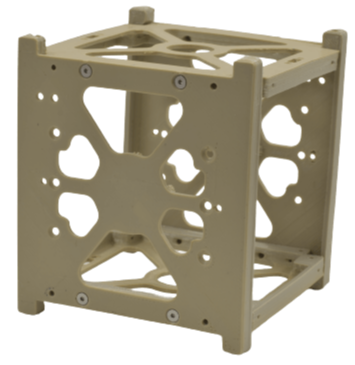Introduction
3D printing, specifically Fused Filament Fabrication (FFF) or Fused Deposition Modeling (FDM), is gaining traction in various industries due to its affordability, flexibility, and wide range of materials it can handle. High-performance polymers like Poly-Ether-Ether-Ketone (PEEK) are particularly attractive for their strength and durability, finding applications in demanding sectors such as aerospace and the production of medical devices¹,².
However, the adoption of 3D printing for these critical applications has been hindered by the inherent weaknesses of the FFF process. The resulting structures are often weak and porous, suffering from delamination that compromises the mechanical properties of the part³. This inconsistency in properties makes it difficult to certify parts for many applications, as 3D-printed parts cannot easily replace traditionally manufactured parts⁴.
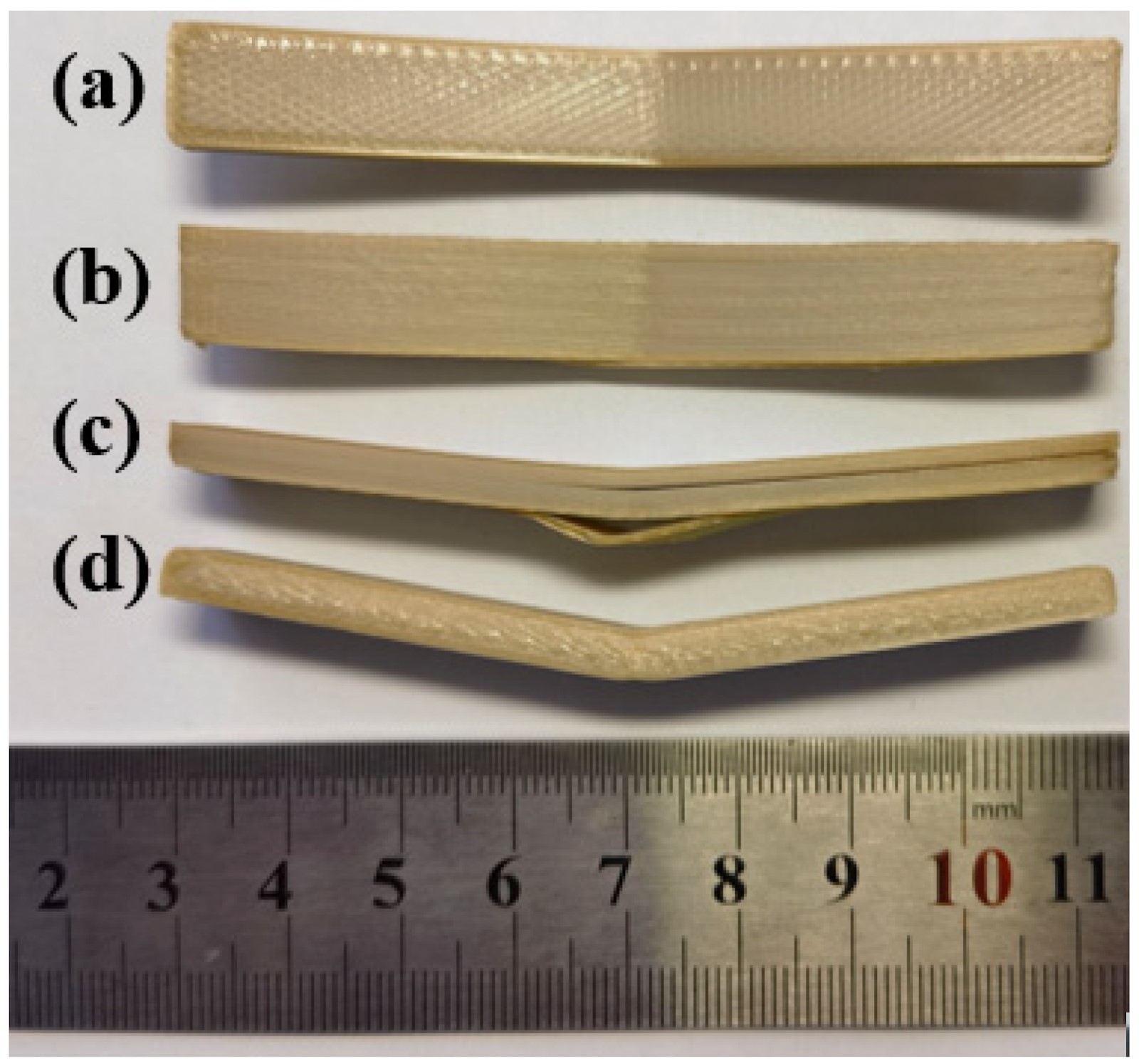
Image: Multiple 3-point bending tests where specimen (c) shows the interlayer debonding of horizontal printing sample due to poor thermal management. Source: Zhen, H.
A study by Zhang et al. (2023) titled "Effect of 3D Printing Process Parameters and Heat Treatment Conditions on the Mechanical Properties and Microstructure of PEEK Parts" highlights these challenges. Despite optimizing a range of process parameters and heat treatment conditions, the study found that 3D printed PEEK parts still exhibited interfilamentous and interlayer gaps, leading to interlayer debonding or delamination. Furthermore, even after heat treatment, the mechanical properties of the parts were highly anisotropic and heavily dependent on the print strategy⁵. This inconsistency in results poses a significant challenge for real-world applications where parts need to be printed for production and require a qualified process.
Orion's Thermal Radiation Heating (TRH) Process
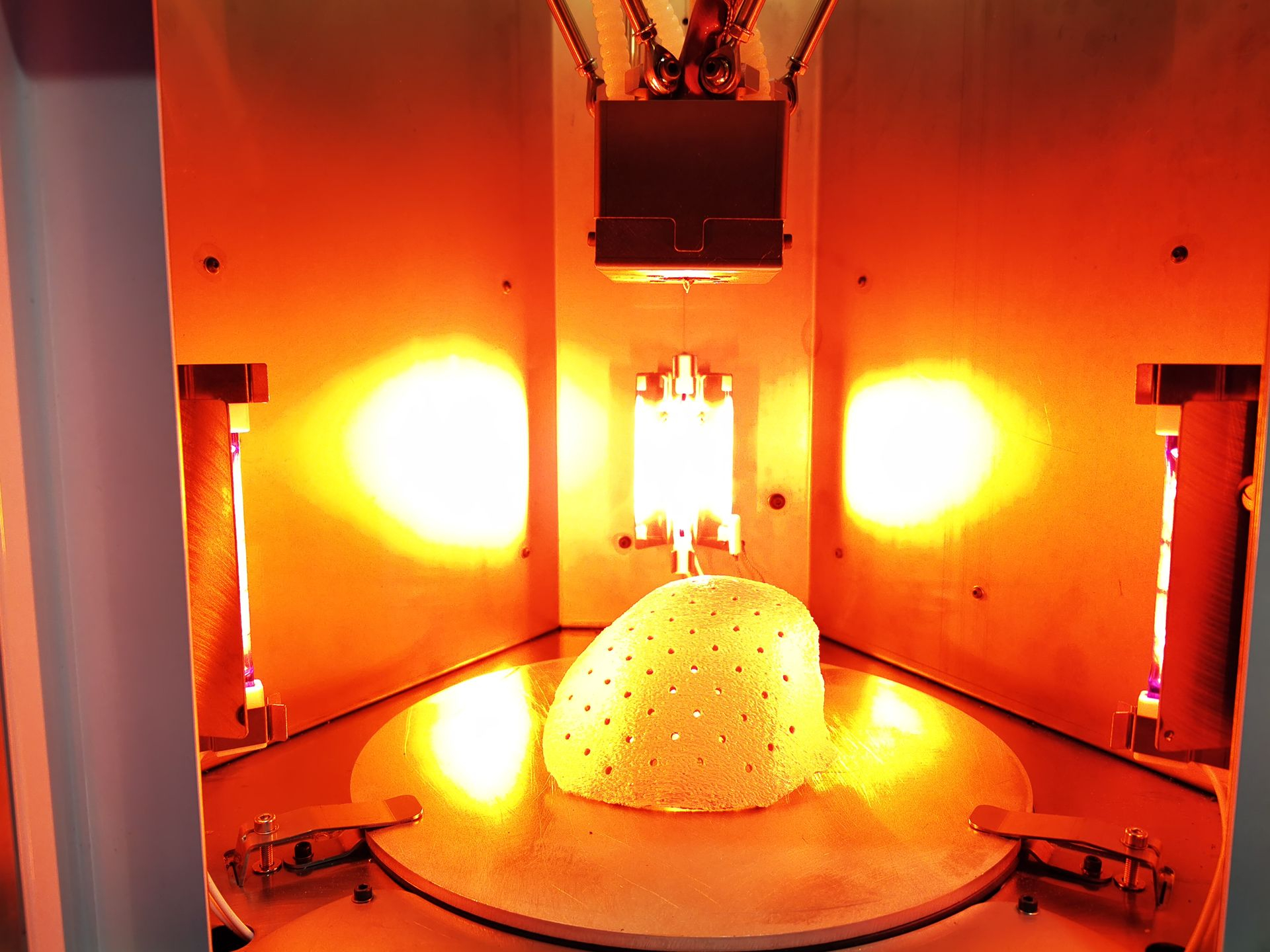
Image: PEEK Cranial Implant 3D Printed on the Orion System
Orion AM, a leader in additive manufacturing, has developed a patent-pending high-temperature 3D printing process that utilizes Thermal Radiation Heating (TRH). This innovative process addresses the prevalent issues in 3D printing, such as poor inter-layer bonding, porosity, and anisotropic behavior, which are often observed in FFF 3D printing.
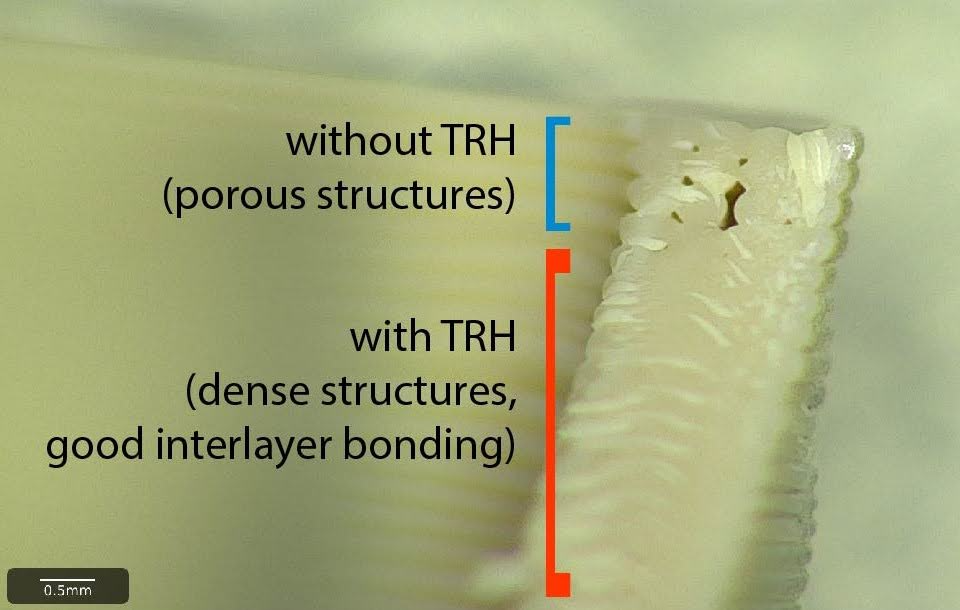
Image: Demonstration of porosity in PEEK
3D-printed part when TRH is not utilized
Orion’s TRH process is a game-changer in the field of additive manufacturing. The advanced thermal management of the TRH process ensures that print lines and layers are fused together during the printing process, creating a homogeneous structure absent of voids or interlayer gaps, resulting in injection molding strength and density. This eliminates the anisotropic behavior typically associated with 3D printed parts, meaning that the infill angle, a common parameter in 3D printing strategies, has no influence on the strength of the prints. The parts produced achieve a void content of less than 0.05% or a relative density of 99.95% which means that they behave like injection-molded parts, further contributing to the nearly isotropic behavior.
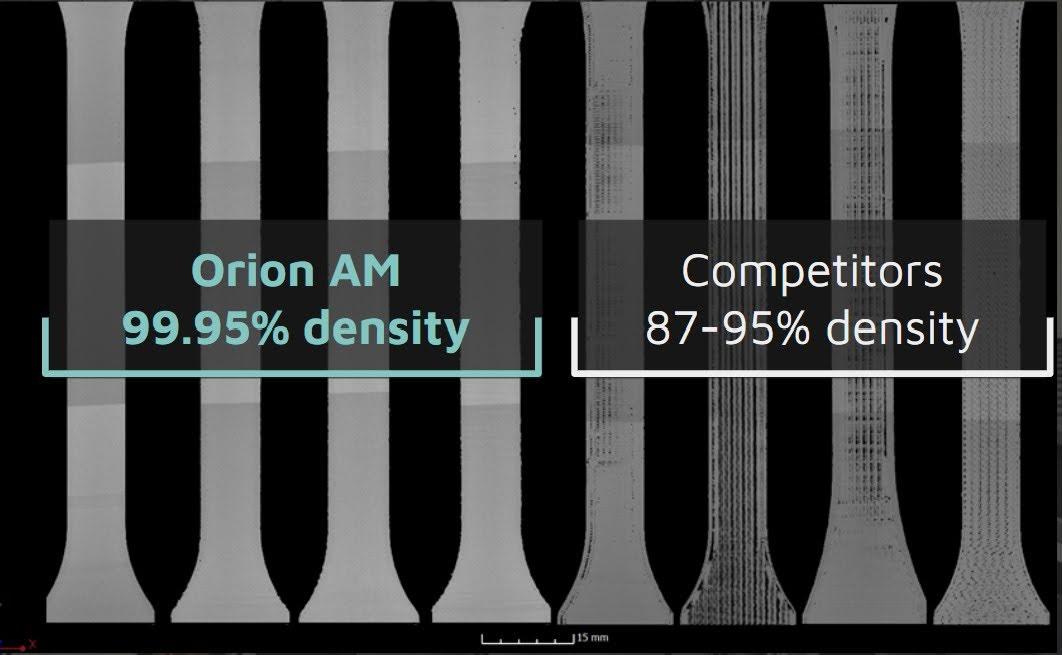
Image: Orion’s TRH process achieving relative density of 99.95%
compared to competing technologies
This isotropic behavior has significant implications for the production of parts. It means that parts do not need to be oriented during printing for optimal strength, and compromises do not need to be made in the part strength. This makes analyses of parts easier, leading to easier qualification and certification of parts, a crucial factor in industries such as aerospace and medical applications.
Furthermore, the TRH process is not only capable of achieving high crystallinity in-situ without the need for post-processing or heat treatment, but it also facilitates the crystallization of PEEK between layers. This remarkable achievement of Orion’s TRH process is a result of the precise thermal management of the high-temperatures during printing. The evidence of this interlayer crystallization is seen in the high tensile strength and modulus achieved in the ZX orientation, as shown in the summarized table below. This interlayer crystallization contributes significantly to the superior mechanical properties of the 3D printed parts, further validating the effectiveness of Orion's TRH process.
The table presents the results of tests conducted on different types of PEEK filament using Orion's TRH process. The data demonstrates the performance of the process, with tensile strength, modulus, and elongation values comparable to those of injection molding.
These results are a testament to the effectiveness of Orion's TRH process in producing high-quality, consistent 3D printed parts, paving the way for the broader industrial adoption of 3D printing.
The Importance of Qualification and Certification
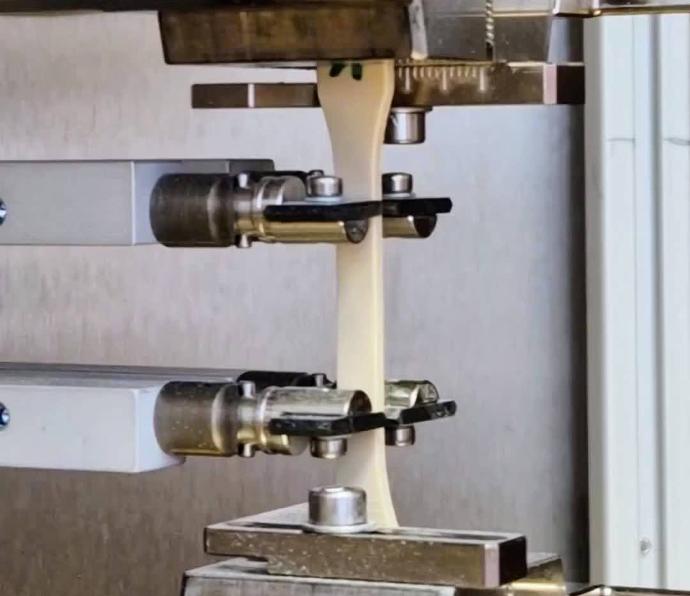 Image: Tensile Strength Tests of 3D-printed PEEK specimens printed with Orion’s TRH process
Image: Tensile Strength Tests of 3D-printed PEEK specimens printed with Orion’s TRH process
The qualification and certification of parts are crucial for the industrial adoption of 3D printing. For sectors like aerospace and the production of medical devices, where the requirements are stringent, the parts used must meet high standards of quality and consistency. The data produced by Orion's TRH process is an important step toward the pre-qualification of a 3D printing process for industrial use⁶.
Orion's Contribution to the Emirates Lunar Mission
Orion's expertise in 3D printing with PEEK was recognized by the European Space Agency (ESA) when they were selected to contribute to the Emirates Lunar Mission. The Rashid rover, part of this mission, incorporates small sample panels on the outer rims of its wheels to test how different materials cope with the abrasive lunar surface6. Orion was sought out for their adeptness at 3D printing in PEEK, contributing a high-quality sample for this experiment⁷.
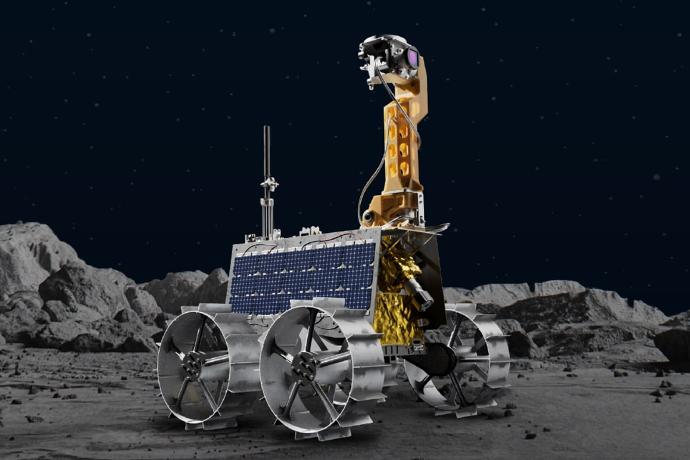
Image: Experimental samples bonded to the wheels of the Rashid rover. Source: ESA
This collaboration is a testament to the trust placed in Orion's TRH process and its potential for producing parts that can withstand the harsh conditions of space. As Aidan Cowley of ESA’s ExPeRT (Exploration Preparation, Research, and Technology) team stated, “This is a chance to touch the Moon for real, to see how material technologies that we have already been working on behave in the actual lunar environment".
Future Directions and Conclusion
The future of 3D printing lies in the ability to produce high-quality, consistent parts that can meet the rigorous standards of industries like aerospace and the production of medical devices. Orion's patent-pending TRH process for PEEK is a significant step in this direction, offering a solution to the issues of poor inter-layer bonding and porosity that have previously limited the potential of 3D-printed PEEK.
The development of this process is not only a testament to the innovation and technical capabilities of Orion, but it also represents a significant advancement in the field of 3D printing. With the ability to produce parts comparable in strength and density to those produced by injection molding, the possibilities for the application of 3D-printed PEEK are expanding rapidly.
The future of 3D printing with PEEK looks promising, with the potential for significant advancements in various industries. With the continued development and refinement of processes like Orion's TRH process, the full potential of this versatile material can be realized.
* Click here to download this White Paper as a PDF
References:
-
All3DP. (2021). PEEK 3D Printing – The Ultimate Guide. Retrieved from https://all3dp.com/1/peek-3d-printer/
- ESA. (2021). 3D printing for space: the additive revolution. Retrieved from https://www.esa.int/Science_Exploration/Human_and_Robotic_Exploration/Research/3D_printing_for_space_The_Additive_Revolution
- Ziemian, C., Sharma, M., & Ziemian, S. (2019). Effects of the Fused Deposition (FDM) 3D Printing Process on the Physicochemical Properties of PEEK Medical Devices. Polymers, 11(5), 799. Retrieved from https://www.mdpi.com/2073-4360/11/5/799/pdf?version=1556962902
- Sood, A. K., Ohdar, R. K., & Mahapatra, S. S. (2012). Parametric appraisal of mechanical property of fused deposition modelling processed parts. Materials & Design, 31(1), 287–295. Retrieved from https://www.sciencedirect.com/science/article/pii/S0261306912000797
- Zhang, Y.; Zhang, Y.; Zhang, H.; Zhang, G.; Li, D.; Shi, Y.; Li, Z.; Li, D. Effect of 3D Printing Process Parameters and Heat Treatment Conditions on the Mechanical Properties and Microstructure of PEEK Parts. Polymers 2023, 15, 2209. https://www.mdpi.com/2073-4360/15/9/2209
- Cantrell, J. T., Rohde, S., Damiani, D., Gurnani, R., DiSandro, L., Anton, J., Young, A., Jerez, A., Steinbach, D., Kroese, C., & Ifju, P. (2017). Experimental characterization of the mechanical properties of 3D-printed ABS and polycarbonate parts. Rapid Prototyping Journal, 23(4), 811–824. Retrieved from https://www.sciencedirect.com/science/article/pii/S0264127517301478
- ESA. (2023). ESA to touch Moon from wheels of UAE Rashid rover. Retrieved from https://www.esa.int/Enabling_Support/Space_Engineering_Technology/ESA_to_touch_Moon_from_wheels_of_UAE_Rashid_rover
